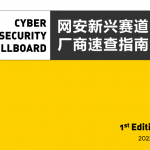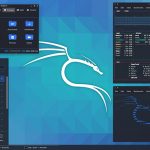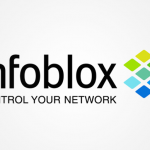后云时代,FreeForce将如何颠覆Salesforce
- 作者: Jean-Paul Smets
- 2014年02月17日
- 云计算, 动态, 趋势

本文是IT经理网“后IT时代”双语专栏的第一篇文章,作者Jean-Paul Smets是上海外高桥自由贸易区的纳宇软件科技公司的CEO。纳宇软件科技经营着一个HTML5应用程序商店 (www.officejs.com)并发布了开源的ERP和CRM产品。(www.erp5.com).
作为一位活跃的开源技术倡导者和开拓者,Smets先生对欧洲、亚洲、非洲和美洲的开源运动有着广泛的接触和深刻的认知,并认为中国将成为“后IT时代”新的产业创新中心。Smets先生有一些非常“激进”和“疯狂”的想法,例如:云计算为代表的集中化互联网基础设施和应用将被端到端的离线Web应用取代;将来企业不再需要昂贵的数据中心、高端服务器和ERP系统…在IT经理网的邀请下,Smets将他对颠覆性技术趋势和商业价值的解读和预测诉诸笔端,与读者分享,以下为“后IT时代”专栏的第一篇文章:“后云时代,FreeForce将颠覆Salesforce”
后云技术是一种新的创建网络服务和应用的方法,与云计算不同的是,我们不再需要服务器或是数据中心,能够将部署和运营一个商务应用的成本降低一百倍!
一次地震带来的后期影响往往比地震本身带来的破坏更加有力,对科技来说也是如此。每天都会有一些具有隐形“创造性破坏”特质的新兴科技出现在市场上。随着时间的推移,将在市场上触发巨大的变化。我们将在这个专栏中识别这些正处于孵化期的科技并预言他们对未来IT行业体系的影响。正如Alan Kay所说,”the best way to predict the future is to invent it”(预测未来最好的办法就是创造它!)。所以在这里,我的每一篇博客都将介绍一个有希望通过现存的技术创造出来的新产品,进而去设想该产品长期商务化发展的结果。
“后IT时代”专栏向读者完全开放,告诉我们你感兴趣的科技,我们也将在这里介绍你。如果你希望使用这里介绍的想法创建公司,请不要犹豫:我们没有为它们申请任何的专利。如果你能够提供一个完美的商务计划,我们甚至可以为你提供经济上和技术上的全力支持。
后云时代 ,FreeForce将颠覆Salesforce
后云技术是一种新的创建网络服务和应用的方法,类似于云计算。但是,与云计算不同的是,我们不再需要服务器或是数据中心。相比较传统云计算而言,这个新理论能够将部署和运营一个商务应用的成本降低一百倍!接下来就要讲到的是如何做到这一点。
离线 HMTL5 万维网联盟(World Wide WebConsortium,又称”W3C理事会”) 在2008年为所谓的”离线网络应用“定义了一个规范说明。这个说明中,定义了一个需要被网络浏览器留存的文档列表。也就是说用户可以使用他的智能手机访问一个网站,然后访问另外一个网站,将手机设置成飞行模式,再回到第一个网站……还是可以正常浏览使用。 你可以用这个Task Manager 应用试一试离线HTML5。打开一个新的窗口(用火狐或Chrome网络浏览器),关闭你电脑的网络连接。尝试刷新此应用,发现页面还是能够加载。如果你再多玩玩这个应用,你会发现它已经包含了可以搜索记录的数据库。你可以随意进行添加或修改记录等操作。这个应用程序工作的原理是使用在网络浏览器里面运行的全部javascritpts。一旦应用被加载了,无需再加载一次,除非发行了新的版本。
所有的计算都在你的电脑或者智能手机上完成,而无需访问网络。这个方法比任何方法都要可靠,特别是当你旅行时或是到数据连接质量非常差的地方时。 FreeForce 设想现在一个年轻的中国青年在开发一个类似于Salesforce.com这样新的离线HTML5应用。Salesforce是一个非常著名的客户关系管理(CRM)应用。它同样也是世界上排名第一,年收入超过30亿美元的云计算服务商。
设想现在这个中国青年将他的CRM应用,在GPL的许可下,作为开源软件发布,就像Linus Torvalds在20多年前对GNU/Linux操作系统Kernel所做的一样。暂且让我们将这个应用称作”FreeForce”.只需要短短几年的时间让大家来比较FreeForce和SalesForce.com. FreeForce是开源的并可以离线运行。Salesforce.com不是开源的并且需要连接到Salesforce集团的服务器上。FreeForce是由一个中国青年开发并由一整个社区的贡献者根据用户的建议来迅速即时地添加功能。Salesforce.com则是一个由传统企业通过定期发布新版本来开发,通常忽略用户需求,而使用其分销渠道发行的应用。
谁是赢家 ?目前FreeForce,还只是我们虚构的一个产品。我们希望SalesForce.com不会犯微软在20年前犯的一样的错误,该错误导致了微软在企业服务器市场上的失败,从而让GNU/Linux统治了这个市场。
然而,如果FreeForce是存在的,如果SalesForce.com和微软一样犯了错,历史告诉我们:FreeForce一定会赢得这场竞争。
经济分析家在同一个方向也做了总结。创建FreeForce所需的资本包含:一个可以承载几个HTML5静态文档的微型服务器。FreeForce的运营成本是:一些全职的开发者,负责将由社区用户提交的补丁进行合并。总体算来,就是100欧的初始投资加上每年50,000欧元用来支付给开发者的人工成本。
相比而言,SalesForce.com的成本包括了:数据中心,系统管理员,大规模开发团队,翻译人员,销售人员,后台支持人员等等。在过去的10年里,SalesForce.com的累计损失已经超过了10亿美元。
更令人吃惊的是两种商务模式中边际成本的差别。在”FreeForce”的例子中,不管用户数量是多少,成本都保持不变。也就是说FreeForce是属于零边际成本的商务模式。而在SalesForce.com的例子中,越多的用户,意味着越多的成本。也就是说SalesForce.com是属于非零边际成本的商务模式。
由于”零边际成本”商务模式总是赢家,如果不采用一个相似的商务模式,SalesForce.com不会有未来。
这不是痴人说梦!
“Freeforce”模式是否好的太不真实了呢?这是否意味着所有的云计算服务都将消失呢?
可以确定的是,后云时代的HTML5理论将在接下来的10年内引起一个巨大的市场混乱。(参考:HTML5这条路,谁先走,怎么走?)但还是会给云储存服务商留下一些机会,至少对于一些不愿意在家里使用服务器做备份的用户来说是如此。事实上,像七牛或Dropbox这样的服务商与HTML5应用合作的非常默契,这都要归功于像JIO 或RemoteStorage这样的Javascript库.同时,对于生产类似Rikomagic,基于Rockchip芯片的微型服务器的硬件厂商来说,也将会产生新的机遇。一些公司日益拒绝云储存供应商,特别是在像德国这样的国家,在揭发了美国政府是如何监视德国政要之后。专家们甚至开始质疑加密效率。
对于大数据服务商来说也会有一些商机,尽管大数据对于大多数公司来说是一个从较远地方迁移来的概念。只要想一想,整个中央银行的数据库都能被储存在一个先进的智能手机中。(我知道这个是因为我曾为中央银行工作过)。
总的说来,离线HTML5向我们展示了基于云服务和传统服务器理念的企业IT将会如何逐渐消失。我们并不是唯一有此预言的人,Google 最近的战略就是集中在他们自己的 Chrome离线应用的技术指标上,有一个超过150名工程师的团队在为此工作。Mozilla基金会也已经为火狐OS离线HTML5应用创建了他们自己的技术指标。
Bridges 已经有了不同的版本:万维网联盟离线应用可以被转换成Chrome离线应用。Chrome离线应用可以被转换成安卓或iOS应用。不同版本之间的区别还不是非常的大。
后云时代即将迎来系列颠覆性革命
后云时代是我们后IT时代的第一个里程碑。它不仅对商务应用有潜在的巨大影响,对这个行业其他方面也有非常大的影响。
现如今,一个Chrome浏览器的扩展就可以让你的浏览器摇身一变成为网络服务器, 一个基于网络浏览器的端对端的新型网络能够使所有的个人设备无缝对接交流并从你的手机,电视,路由器上复制你的个人数据。
在我们接下来的后IT时代重大事件中,我们将设想后云时代如何改变IT行业并带来后PC时代,后路由器时代,后ERP时代,后大数据时代,后浏览器时代,后服务器时代,后互联网时代,后网络时代等等。
The After Chronicles
Aftercloud era, How will Freeforce override Salesforce
The Aftershocks of an earthquake sometimes produce more changes to the landscape than the initial shock. Same goes for technology. Everyday, disrupting technologies are introduced on the market, barely visible. But after years, some trigger massive changes to the market. We try in this chronicle to identify how current technologies will impact future corporate IT. Quoting Alan Kay, “the best way to predict the future is to invent it”. Each blog post will thus describe a – hopefully – new imaginary product that could be created with existing technologies. We then envisage the long term business consequences of this product. This chronicle is open to your thoughts. Tell us about technologies you have identified and we will tell about you. And if you would like to create a startup based on any of the ideas we present, feel relaxed: we did not file any patent. We could actually even support you, financially or technically if you provide us a business plan.
The After Chronicles are written by JP Smets, CEO of Nayukeji startup company in Shanghai Free Trade Zone (Wai Gao Cao). Nayukeji operates an HTML5 appstore (www.officejs.com) and publishes an open source ERP/CRM (www.erp5.com).
Chronicle 1: the AfterCloud
The AfterCloud is a new way to create Web services and applications that are similar to Cloud Computing. However, unlike Cloud Computing, no server and no datacenter is required. This novel approach can reduce by a factor of 100 the cost of deploying and operating a business applications compared to traditional Cloud Computing. Here is how.
Offline HMTL5
The World Wide Web Consortium has defined in 2008 a specification for so-called “Offline Web Applications”. Under this specification, one defines a list of files that must be persisted by the Web browser. This means that a user can visit a Web site with his smartphone, visit another Web site, set his phone in Airplane mode, go back to the first web site… and it still works.
You can experiment offline HTML5 yourself with this Task Manager application. Open it a new window (with Firefox or Chrome web browser), turn off network on your computer. Try to reload the application. The page will load. If you play a bit with the application, you will find out that it has includes a database that can search records. You can add records, change them, etc.
The way this application actually works is by using javascripts that run entirely inside the Web browser. Once the application is loaded, there is no need to load it again, unless a new version is published. All computation can thus happen on your laptop or on your smartphone, without accessing network. This approach is actually more reliable than anything else, especially during travel or in cities where data connectivity is poor.
FreeForce
Imagine now that a young Chinese teenager starts developing a new Offline HMTL5 that does what an application like Salesforce.com does. Salesforce is a very popular customer relationship management (CRM) application. It is also the No 1 cloud computing service in the world, with more than 3 billion dollar yearly revenue.
Imagine now that this young Chinese teenager provides his CRM application as Free Software, under the GPL license, just like Linus Torvalds did more than 20 years ago for the GNU/Linux operating system kernel. Let us call the application “FreeForce”.
It will only a take a few years before everyone compares FreeForce and SalesForce.com. FreeForce is free and runs offline. Salesforce.com is not free and requires to connect to the servers of Salesforce corporation. FreeForce is developped by a young Chinese teenager with a community of contributors who quickly add features based on user suggestions. Salesforce.com is developed by a traditional corporation that releases new versions from time to time and that tends to ignore user requests that are passed through its distribution channel 。
Who wins ?
FreeForce currently does not exist. Hopefully, SalesForce.com will not do the same mistakes as Microsoft did 20 years ago, mistakes that lead in the case Microsoft to its failure on the enterprise server market > and to the domination of GNU/Linux on that market.
However, if FreeForce existed and if SalesForce.com did the same mistakes as Microsoft, history tells us that FreeForce would surely win.
Economic analysis concludes in the same direction. The capital required to produce FreeForce consists of: a micro-server that hosts a few HTML5 static files.The operating costs of FreeForce are: a few full time developer who merge patches submitted to him by a community of users. Overall,this is 100 ? capital investment plus 50,000 ? per year for this developer. Compare this to SalesForce.com expenses: data centers,system administrators, large developer team, translators, sales people, support people, etc. Over the last 10 years, SalesForce.com has accumulated losses for more than one billion dollar.
What is also striking is the different between the two business models in terms of marginal cost. In the case of “FreeForce”, expenses remain equal whatever the number of users. This means that FreeForce is based on a zero marginal cost business model. In the case of SalesForce.com, the more users, the more expenses. This means that SalesForce.com is based on a non zero marginal cost business model.
Since “zero marginal cost” business models always win, there actually no future to Salesforce.com unless they adopt a similar business model.
Too Good to Be True ?
Is this too good to be true? Are all Cloud Computing services going to disappear?
For sure, the HTML5 approach of the AfterCloud will create in the next 10 years a major market disruption. But there will still be some opportunities remaining for Cloud storage services, at least for users who do not wish to keep a server at home for backup. Services like Qiniu or Dropbox work actually quite well with HTML5 applications thanks to Javascript libraries such as JIO or RemoteStorage.
There will be also an renewed opportunity for hardware vendors that produce nano-servers such as Rikomagic based on Rockchip. Some companies reject increasingly Cloud storage providers, especially in countries like Germany after people discovered how US government was spying German chancellor. Even encryption efficiency is now questioned by specialists. There could also be still some opportunity for big data services, although big data is a far fetched term for most companies. Just consider the whole database of a Central Bank can fit in the memory of a modern Smartphone (I know this because I work for Central Bank).
Overall, Offline HTML5 shows that many Cloud services and traditional server based approaches of enterprise IT are meant to disappear. We are not alone to envision such a future.
Google recent strategy has focuses on its own specification for Chrome offline applications with a team of more than 150 engineers backing this effort. The Mozilla foundation has also created its own specification for Firefox OS offline HTML5 applications.
Bridges already exist between different formats: W3C offline applications can be converted to Chrome offline applications. Chrome offline applications can be converted to Android or iOS applications.
Differences between the different formats are not that huge still.
What Else ?
The AfterCloud is our first chronicle. It has huge potential impact not only for business applications but also for the rest of the industry.
Nowadays, a Chrome extension turns your browser into an Web server , a new kind of peer-to-peer network based on your Web browser can make all personal device communicate seamlessly and replicate your personal data from your phone, to your TV, to your router.
In our next chronicles, we will imagine how the AfterCloud can change the IT industry and bring AfterPC,AfterRouter, AfterERP, AfterBigData, AfterBrowser, AfterServer,AfterInternet, AfterWeb and more…
第一时间获取面向IT决策者的独家深度资讯,敬请关注IT经理网微信号:ctociocom

除非注明,本站文章均为原创或编译,未经许可严禁转载。
相关文章:














